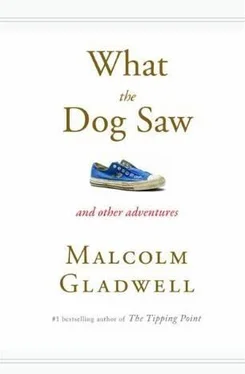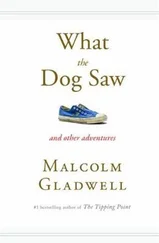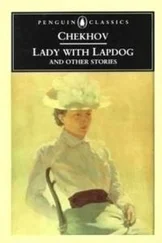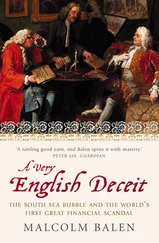The idea for the Showtime came about in the same way. Ron was at Costco when he suddenly realized that there was a long line of customers waiting to buy chickens from the in-store rotisserie ovens. They touched on rotisserie chicken, but Ron knew one thing: they did not have a rotisserie oven. Ron went home and called Backus. Together, they bought a glass aquarium, a motor, a heating element, a spit rod, and a handful of other spare parts, and began tinkering. Ron wanted something big enough for a fifteen-pound turkey but small enough to fit into the space between the base of an average kitchen cupboard and the countertop. He didn’t want a thermostat, because thermostats break, and the constant clicking on and off of the heat prevents the even, crispy browning that he felt was essential. And the spit rod had to rotate on the horizontal axis, not the vertical axis, because if you cooked a chicken or a side of beef on the vertical axis the top would dry out and the juices would drain to the bottom. Roderick Dorman, Ron’s patent attorney, says that when he went over to Coldwater Canyon he often saw five or six prototypes on the kitchen counter, lined up in a row. Ron would have a chicken in each of them, so that he could compare the consistency of the flesh and the browning of the skin, and wonder if, say, there was a way to rotate a shish kebab as it approached the heating element so that the inner side of the kebab would get as brown as the outer part. By the time Ron finished, the Showtime prompted no fewer than two dozen patent applications. It was equipped with the most powerful motor in its class. It had a drip tray coated with a nonstick ceramic, which was easily cleaned, and the oven would still work even after it had been dropped on a concrete or stone surface ten times in succession, from a distance of three feet. To Ron, there was no question that it made the best chicken he had ever had in his life.
It was then that Ron filmed a television infomercial for the Showtime, twenty-eight minutes and thirty seconds in length. It was shot live before a studio audience, and aired for the first time on August 8, 1998. It has run ever since, often in the wee hours of the morning, or on obscure cable stations, alongside the get-rich schemes and the Three’s Company reruns. The response to it has been such that within the next three years total sales of the Showtime should exceed a billion dollars. Ron Popeil didn’t use a single focus group. He had no market researchers, R &D teams, public-relations advisers, Madison Avenue advertising companies, or business consultants. He did what the Morrises and the Popeils had been doing for most of the century, and what all the experts said couldn’t be done in the modern economy. He dreamed up something new in his kitchen and went out and pitched it himself.
Nathan Morris, Ron Popeil’s great-uncle, looked a lot like Cary Grant. He wore a straw boater. He played the ukulele, drove a convertible, and composed melodies for the piano. He ran his business out of a low-slung, whitewashed building on Ridge Avenue, near Asbury Park, with a little annex in the back where he did pioneering work with Teflon. He had certain eccentricities, such as a phobia he developed about traveling beyond Asbury Park without the presence of a doctor. He feuded with his brother Al, who subsequently left in a huff for Atlantic City, and then with his nephew S. J. Popeil, whom Nathan considered insufficiently grateful for the start he had given him in the kitchen-gadget business. That second feud led to a climactic legal showdown over S. J. Popeil’s Chop-O-Matic, a food preparer with a pleated, W-shaped blade rotated by a special clutch mechanism. The Chop-O-Matic was ideal for making coleslaw and chopped liver, and when Morris introduced a strikingly similar product, called the Roto-Chop, S. J. Popeil sued his uncle for patent infringement. (As it happened, the Chop-O-Matic itself seemed to have been inspired by the Blitzhacker, from Switzerland, and S.J. later lost a patent judgment to the Swiss.)
The two squared off in Trenton, in May of 1958, in a courtroom jammed with Morrises and Popeils. When the trial opened, Nathan Morris was on the stand, being cross-examined by his nephew’s attorneys, who were out to show him that he was no more than a huckster and a copycat. At a key point in the questioning, the judge suddenly burst in. “He took the index finger of his right hand and he pointed it at Morris,” Jack Dominik, Popeil’s longtime patent lawyer, recalls, “and as long as I live I will never forget what he said. ‘I know you! You’re a pitchman! I’ve seen you on the boardwalk!’ And Morris pointed his index finger back at the judge and shouted, ‘No! I’m a manufacturer. I’m a dignified manufacturer, and I work with the most eminent of counsel!’” (Nathan Morris, according to Dominik, was the kind of man who referred to everyone he worked with as eminent.) “At that moment,” Dominik goes on, “Uncle Nat’s face was getting red and the judge’s was getting redder, so a recess was called.” What happened later that day is best described in Dominik’s unpublished manuscript, “The Inventions of Samuel Joseph Popeil by Jack E. Dominik—His Patent Lawyer.” Nathan Morris had a sudden heart attack, and S.J. was guilt-stricken. “Sobbing ensued,” Dominik writes. “Remorse set in. The next day, the case was settled. Thereafter, Uncle Nat’s recovery from his previous day’s heart attack was nothing short of a miracle.”
Nathan Morris was a performer, like so many of his relatives, and pitching was, first and foremost, a performance. It’s said that Nathan’s nephew Archie (the Pitchman’s Pitchman) Morris once sold, over a long afternoon, gadget after gadget to a well-dressed man. At the end of the day, Archie watched the man walk away, stop and peer into his bag, and then dump the whole lot into a nearby garbage can. The Morrises were that good. “My cousins could sell you an empty box,” Ron says.
The last of the Morrises to be active in the pitching business is Arnold (the Knife) Morris, so named because of his extraordinary skill with the Sharpcut, the forerunner of the Ginsu. He is in his early seventies, a cheerful, impish man with a round face and a few wisps of white hair, and a trademark move whereby, after cutting a tomato into neat, regular slices, he deftly lines the pieces up in an even row against the flat edge of the blade. Today, he lives in Ocean Township, a few miles from Asbury Park, with Phyllis, his wife of twenty-nine years, whom he refers to (with the same irresistible conviction that he might use to describe, say, the Feather Touch Knife) as “the prettiest girl in Asbury Park.” One morning recently, he sat in his study and launched into a pitch for the Dial-O-Matic, a slicer produced by S. J. Popeil some forty years ago.
“Come on over, folks. I’m going to show you the most amazing slicing machine you have ever seen in your life,” he began. Phyllis, sitting nearby, beamed with pride. He picked up a package of barbecue spices, which Ron Popeil sells alongside his Showtime Rotisserie, and used it as a prop. “Take a look at this!” He held it in the air as if he were holding up a Tiffany vase. He talked about the machine’s prowess at cutting potatoes, then onions, then tomatoes. His voice, a marvelous instrument inflected with the rhythms of the Jersey Shore, took on a singsong quality: “How many cut tomatoes like this? You stab it. You jab it. The juices run down your elbow. With the Dial-O-Matic, you do it a little differently. You put it in the machine and you wiggle”—he mimed fixing the tomato to the bed of the machine. “The tomato! Lady! The tomato! The more you wiggle, the more you get. The tomato! Lady! Every slice comes out perfectly, not a seed out of place. But the thing I love my Dial-O-Matic for is coleslaw. My mother-in-law used to take her cabbage and do this.” He made a series of wild stabs at an imaginary cabbage. “I thought she was going to commit suicide. Oh, boy, did I pray—that she wouldn’t slip! Don’t get me wrong. I love my mother-in-law. It’s her daughter I can’t figure out. You take the cabbage. Cut it in half. Coleslaw, hot slaw. Pot slaw. Liberty slaw. It comes out like shredded wheat…”
Читать дальше











